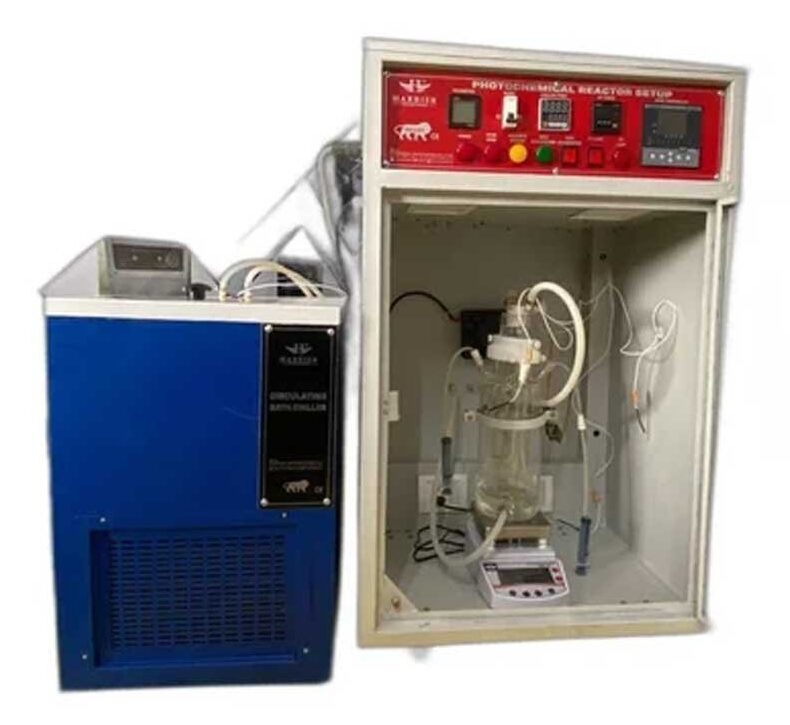Photochemical Reactor Unit

A photochemical reactor unit is a device designed for conducting chemical reactions driven by light absorption. It typically consists of a light source (e.g., UV lamps), a reaction chamber for reactants, inlets and outlets, stirring mechanisms, and safety features. Photochemical reactions are useful in various applications, including organic synthesis and environmental remediation, leveraging the energy of light to initiate or enhance chemical transformations.
Uses of Photochemical Reactor Unit:
- Organic Synthesis: Photochemical reactors enable precise control over reactions, making them valuable for synthesizing complex organic compounds with high selectivity.
- Water Treatment: They are used to degrade pollutants and disinfect water by harnessing the power of UV or visible light to break down contaminants.
- Photocatalysis: Photochemical reactors facilitate photocatalytic processes for environmental applications, such as air purification and reducing greenhouse gas emissions.
- Pharmaceutical Research: These units play a role in drug development by assisting in the synthesis of pharmaceutical intermediates and active ingredients.
- Material Science: Photochemical reactors are used in the fabrication of advanced materials, like nanoparticles and polymers, with tailored properties.
Photo catalytic Reactor:
Make: HE (NSIC Regd, ISO 9001 – 2015/14001-2015/13485-2016/FDA/GMP/CE Certified)
Photocatalytic Reactor Photo catalytic Reactor with triple jacketed with 3 port to insert catalyst, Sample draw and one for additional use like temperature sensor etc. Outer jacketed made of borosilicate glass extra cooling jacket for water circulator with two port inlet and outlet port made of quartz inner jacketed quartz immersion well
Capacity : 100 ml, also we have different
Capacity: From 100 ml to 5000 ml
Make: Harrier Enterprises
Description:-
- Photocatalytic Reactor
- Photo catalytic Reactor with triple jacketed with 3 port to insert catalyst, Sample draw and one for additional use like3 temperature sensor etc.
- Outer jacketed made of borosilicate glass
- extra cooling jacket for water circulator with two port inlet and outlet port made of quartz inner jacketed quartz immersion well
- Capacity – 100 ml, also we have different capacity from 100 ml to 5000 ml
- Make: – Harrier Enterprises
Frequently Asked Questions (FAQs)
A photochemical reactor is primarily used to initiate or enhance chemical reactions through the absorption of light. It finds applications in organic synthesis, water treatment, environmental remediation, and more.
Common light sources for photochemical reactions include UV lamps, LEDs, and natural sunlight, depending on the specific reaction requirements.
Photochemical reactions can involve potentially harmful UV radiation, so safety measures, including protective equipment and proper shielding, should be in place to minimize risks.
Photochemical reactions use light energy to initiate reactions, which can offer higher selectivity and milder reaction conditions compared to traditional thermal reactions that rely on heat.
Photochemical reactors are used in synthesizing pharmaceuticals, degrading pollutants in water treatment, photocatalysis for air purification, and in material science for creating advanced materials like nanoparticles and polymers.
